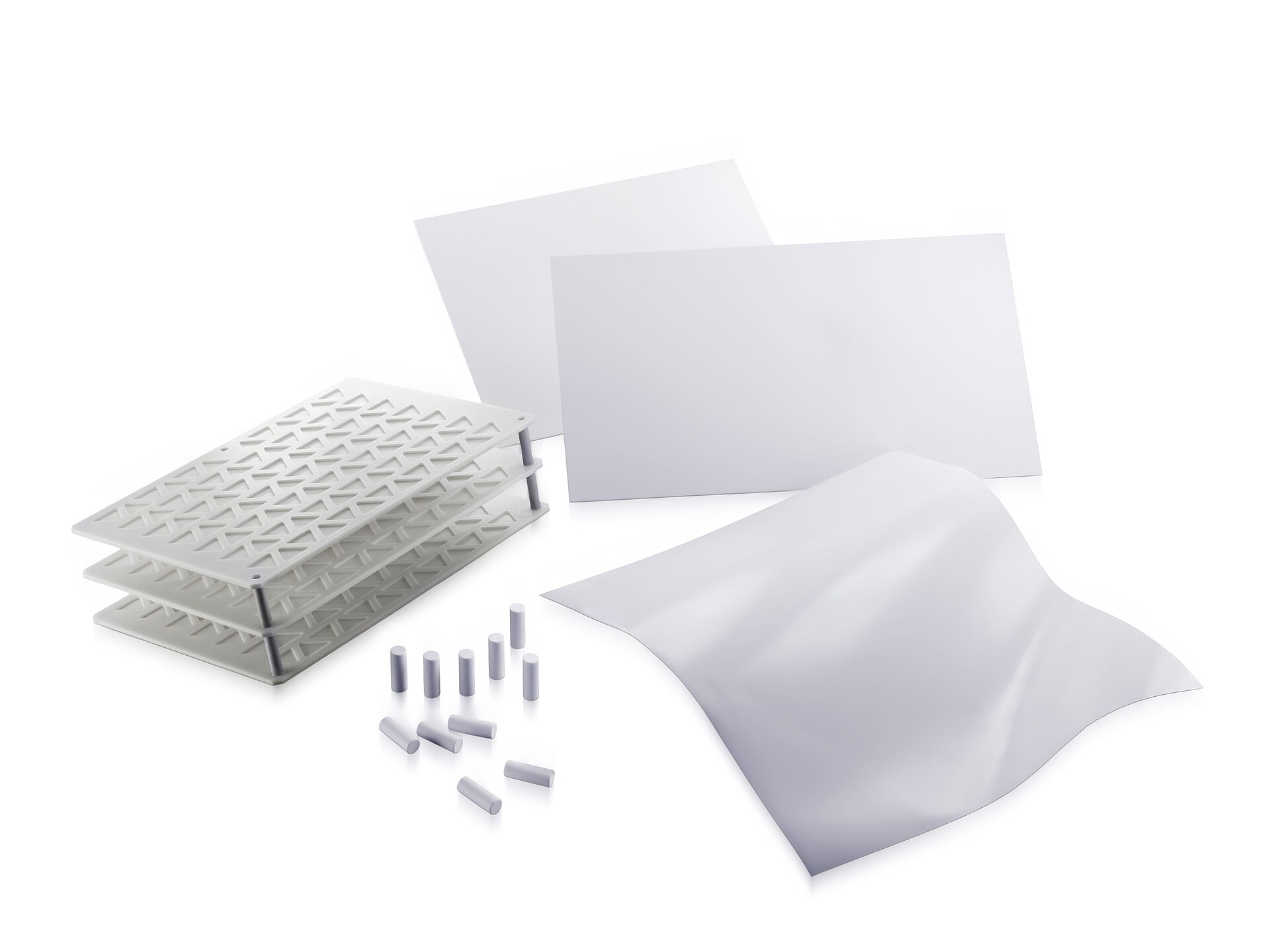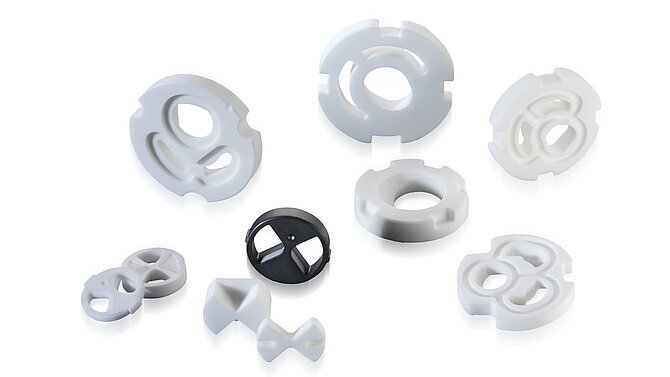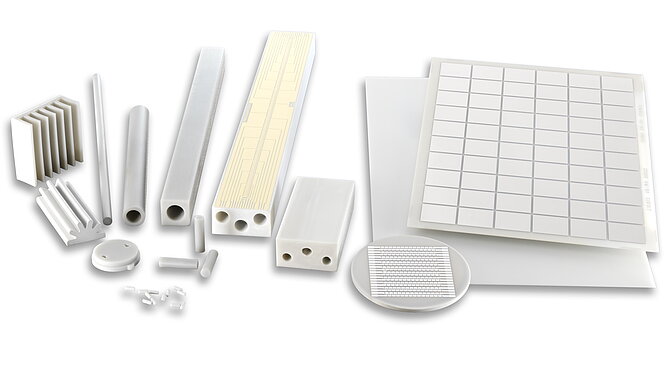As setter plates, alumina and aluminum nitride ceramics offer decisive advantages over conventional setters made from materials like graphite or tungsten. This enables energy and cost-efficient processing of high-precision sintering components.
Sintering trays and setter plates help optimally arrange and secure molded parts in a sintering furnace to prevent undesirable deformations during the firing process.

To ensure energy-efficient and precise process control when firing, CeramTec offers a wide range of materials made from aluminum oxide and aluminum nitride ceramics that can be used to manufacture setter plates in customer-specific designs and qualities with decisive advantages:
- Roughness
Lower surface roughness ensures optimum gliding for molded parts. A general surface roughness of Ra < 1 µm makes it possible to achieve uniform shrinkage during the firing process, thus helping to preserve the shape of the products. The smooth, particle-free surface also protects parts from contamination from the setters.
- Thermal conductivity
High thermal conductivity of Al2O3 and especially AlN ceramics is the basis for low lateral temperature differences and results in homogeneous thermal distribution within the sintering components. Excellent thermal shock resistance is another added benefit, which enables faster firing cycles.
- High thermal resistance
This has a positive effect on the energy efficiency of the firing processes. Highly thermally resistant materials like advanced ceramics result in lower thicknesses of the setters, which improves energy efficiency because there is less thermal ballast. In addition, ceramic setter plates can also be used at temperatures far above 1000°C.
- Inert surfaces
Advanced ceramics make using releasing agents or protective layers such as coatings obsolete, because there are no contact reactions with metals. Thus, these setter plates also have a long lifetime and do not require reconditioning. For example, molten metals cannot wet aluminum nitride ceramics. Aluminum nitride and ultrapure alumina (> 99%) can be used both in protective gas atmospheres and reduction atmospheres. They are also stable in reactive atmospheres and in hydrogen atmospheres.
- High mechanical stability
This property, paired with low thermal capacity, not only results in a lower weight with a reduced tray volume; it also retains very little residual heat during the cooling process. This has a positive impact on energy consumption during firing.
The maximum dimensions, such as 350 x 350 mm with Alunit®, enable a high packing density. These setter plates can be stacked – with integrated cavities on request – thereby ensuring fast, effective sintering furnace charging. This makes optimal use of furnace volume and energy expenditure, which results in a fully energetically optimized sintering process.
The setter plates can be used in ceramic injection molding (CIM), metal injection molding (MIM) and low temperature co-fired ceramics (LTCC). Recesses and customized designs are further cost-efficient options that are available on request.


